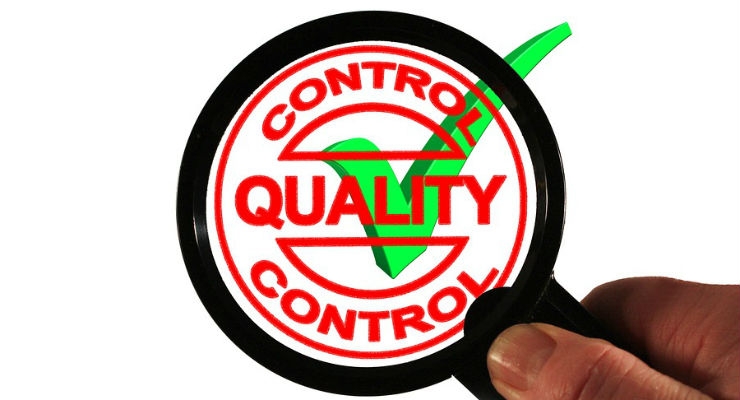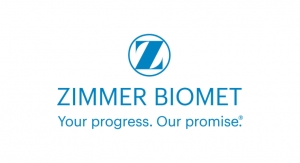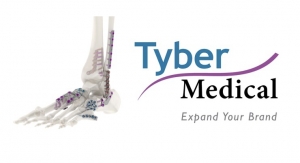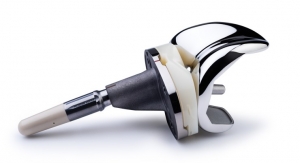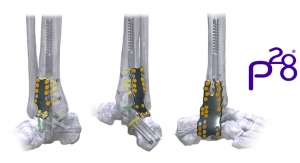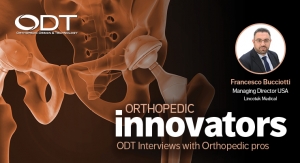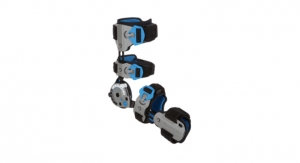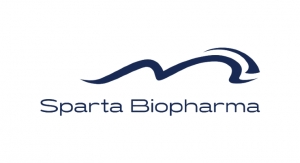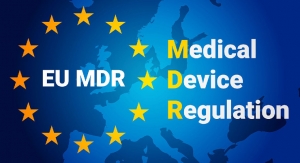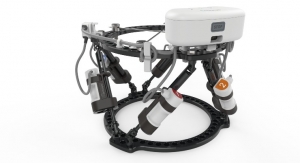Alexa Sussman, Content Marketing Writer, EtQ08.15.17
Audits and inspections are essential parts of medical device manufacturing. Yes, they can be a pain point for many organizations since they require a lot of preparation and may happen unexpectedly. But they are an essential way to keep manufacturers accountable, which in turn, keeps patients using their devices safe.
Previously, companies that manufactured and sold their devices in more than one country would have to be audited by more than one regulatory body. For example, a company with manufacturing facilities in the United States and within the European Union (EU) would have to undergo audits from both the U.S. Food and Drug Administration (FDA) and the European Medicines Agency. This was a challenge for many organizations, due to setting aside the time and resources necessary to simultaneously prepare for fundamentally different audits.
Regulatory bodies have recognized the challenges that multiple audits create; they have been experiencing them as well. In response, many recent changes to regulatory law regarding audits have been made with the introduction of single audit programs. Here are the answers to four commonly asked questions about single audit programs to help you become familiar with them and prepare your organization for their implementation.
1. What Is a Single Audit Program?
Single audit programs change the regulatory law requiring separate audits to satisfy each regulatory body governing a manufacturer. The goal of a single audit program is to harmonize audits and inspections on a global scale by recognizing the audits and inspections of other countries. By doing so, the audit process loses its repetition and becomes more of a collaborative act on a global scale.
In March 2017, Canada launched the Medical Device Single Audit Program (MDSAP). This program was designed to replace the current Canadian Medical Devices Conformity Assessment System. Under this program, medical device manufacturers can undergo a single audit that meets the requirements of all participating countries: United States, Australia, Brazil, Canada, and Japan. This aggregates manufacturers all over the world into one standard audit and inspection system.
Another single audit program was also announced in March—the United States and European Union announced the Mutual Recognition Agreement (MRA). This is an amendment to the already existing 1998 Pharmaceutical Sectoral Annex between the two organizations. The goal of this program is to combine the most efficient and effective parts of each party’s audit procedures to create a single, harmonized set of standards. Under the MRA, the United States and EU will recognize each other’s audits at pharmaceutical manufacturing sites starting in November 2017.
2. What Are the Benefits of a Single Audit Program?
Based on the description, it’s easy to see how single audit programs can carry benefits for organizations that no longer have to undergo multiple audits. But what makes these programs unique is they are mutually beneficial for both the medical device manufacturer and the regulatory bodies.
Some of the top benefits include:
Regulatory organizations also shed the burden of extra audit costs when it’s not absolutely necessary. Traveling for and conducting audits takes up a lot of time and resources that can be better spent on other priorities when repeat audits are no longer a concern. For example, a major criticism of the FDA is how long the drug approval process takes and how subjective it is. Freeing up resources from inspections could allow more resources to be dedicated to either alleviating the bottleneck of pending approvals, or changing the process to something more widely accepted.
Less regulatory pressure and business interruptions: Before single audit programs, manufacturers would need to simultaneously prepare for two separate inspection processes, not knowing which would come first. Each one required a different set of documentation and different standards to be met. This caused a lot of regulatory pressure among manufacturers because twice the preparation would be made.
Additionally, more audits would mean more business interruptions because production would stop or slow down multiple times while audits were conducted. The entire process—from preparation to execution to follow-up actions—can take days away from normal production schedules.
Similarly, regulatory bodies face pressure for audits. They need to inspect an ever-increasing number of sites, which becomes more and more difficult. Just as is the case of the manufacturers, devoting a lot of time and resources to audits pulls those resources away from other initiatives. These initiatives can’t afford to suffer in an industry that focuses so much on public health.
Single audit programs relieve the pressure on both ends. They can eliminate up to half of the business interruptions caused by preparing for and conducting audits. Both organizations can refocus the resources and efforts previously spent on repeat or multiple audits.
3. What Are the Latest Developments in This Process?
Single audit programs are not just lofty ideas anymore—they have been kicked off and have plans for full implementations by the end of 2018.
The previously mentioned MDSAP has already been launched this past spring. The period for transitioning from the Canadian Medical Devices Conformity Assessment System to the MDSAP began Jan. 1, 2017, and is slated to last for two years. During that time, Health Canada will accept certificates issued under either the Canadian Medical Devices Conformity Assessment System or the MDSAP—but as of Jan. 1, 2019, only MDSAP certificates will be accepted.
As for the Mutual Recognition Agreement, a transition phase is currently in place until July 2019. During this time, the FDA will assess each EU member state’s audit process. The FDA will select the most efficient and effective portions of each audit process, and once the group agrees on the best aspects, they will be compiled into one set of standards for application across the United States and European Union.
The transition periods give organizations time to adjust current practices and prepare for the changes to come. This is a good time for organizations to re-evaluate their internal communication strategies, supplier management techniques, and audit management systems.
4. How Can I Prepare My Organization for the Changes?
For some medical device manufacturers, the transition to single audit programs will compel their audit processes to change. For others, the transition might be a good opportunity to streamline current process through automation and other leading-edge management strategies.
Either scenario requires some adjustments and adaptation, but they will be worth it in the long run. To make the most of future audit programs, there are a few ways to streamline the audit process:
There are big changes coming to regulatory audit laws—but with cooperation between regulatory bodies, these changes will be mutually beneficial. With these changes comes a shift in mindset surrounding audits; they are becoming a collaborative, global act. This will help audits be a more efficient process and let both inspectors and manufacturers allocate resources to a goal beyond basic compliance.
Alexa Sussman is a marketing content writer for EtQ. She is responsible for developing and writing content for EtQ, a leading enterprise quality and compliance management software vendor, as well as traqpath, EtQ’s compliance and event-tracking solution.
Previously, companies that manufactured and sold their devices in more than one country would have to be audited by more than one regulatory body. For example, a company with manufacturing facilities in the United States and within the European Union (EU) would have to undergo audits from both the U.S. Food and Drug Administration (FDA) and the European Medicines Agency. This was a challenge for many organizations, due to setting aside the time and resources necessary to simultaneously prepare for fundamentally different audits.
Regulatory bodies have recognized the challenges that multiple audits create; they have been experiencing them as well. In response, many recent changes to regulatory law regarding audits have been made with the introduction of single audit programs. Here are the answers to four commonly asked questions about single audit programs to help you become familiar with them and prepare your organization for their implementation.
1. What Is a Single Audit Program?
Single audit programs change the regulatory law requiring separate audits to satisfy each regulatory body governing a manufacturer. The goal of a single audit program is to harmonize audits and inspections on a global scale by recognizing the audits and inspections of other countries. By doing so, the audit process loses its repetition and becomes more of a collaborative act on a global scale.
In March 2017, Canada launched the Medical Device Single Audit Program (MDSAP). This program was designed to replace the current Canadian Medical Devices Conformity Assessment System. Under this program, medical device manufacturers can undergo a single audit that meets the requirements of all participating countries: United States, Australia, Brazil, Canada, and Japan. This aggregates manufacturers all over the world into one standard audit and inspection system.
Another single audit program was also announced in March—the United States and European Union announced the Mutual Recognition Agreement (MRA). This is an amendment to the already existing 1998 Pharmaceutical Sectoral Annex between the two organizations. The goal of this program is to combine the most efficient and effective parts of each party’s audit procedures to create a single, harmonized set of standards. Under the MRA, the United States and EU will recognize each other’s audits at pharmaceutical manufacturing sites starting in November 2017.
2. What Are the Benefits of a Single Audit Program?
Based on the description, it’s easy to see how single audit programs can carry benefits for organizations that no longer have to undergo multiple audits. But what makes these programs unique is they are mutually beneficial for both the medical device manufacturer and the regulatory bodies.
Some of the top benefits include:
- Eased pain points for auditors and manufacturers: Since single audit programs are built from selecting the strongest point of each country’s inspection process, the resulting program is efficient and harmonized. Collaborating efforts allow for a higher standard of operation for everyone, easing many pain points for both inspectors and manufacturers.
- Manufacturers can be assured they are experiencing a complete and standardized audit that will cover all necessary points, regardless of which regulatory body conducts it. Under these types of programs, there is less concern over which audit to prepare for next. This relieves a major pain point for manufacturers that had to be simultaneously prepared for two completely different types of audits.
- Regulatory bodies also experience relief under single audit programs. There are no longer concerns about conflicting inspection processes not covering the same standards. Inspectors can have confidence that their audits cover everything necessary, so when manufacturers and products pass, there is less worry about having missed something. Regulatory bodies from different countries work together rather than in opposition, which makes all the difference.
- Lower costs for both parties: Single audit programs are a money saver for all involved because they eliminate the cost of unnecessary repeat audits. This is another mutually beneficial aspect, reducing costs for both manufacturers and inspectors.
Regulatory organizations also shed the burden of extra audit costs when it’s not absolutely necessary. Traveling for and conducting audits takes up a lot of time and resources that can be better spent on other priorities when repeat audits are no longer a concern. For example, a major criticism of the FDA is how long the drug approval process takes and how subjective it is. Freeing up resources from inspections could allow more resources to be dedicated to either alleviating the bottleneck of pending approvals, or changing the process to something more widely accepted.
Less regulatory pressure and business interruptions: Before single audit programs, manufacturers would need to simultaneously prepare for two separate inspection processes, not knowing which would come first. Each one required a different set of documentation and different standards to be met. This caused a lot of regulatory pressure among manufacturers because twice the preparation would be made.
Additionally, more audits would mean more business interruptions because production would stop or slow down multiple times while audits were conducted. The entire process—from preparation to execution to follow-up actions—can take days away from normal production schedules.
Similarly, regulatory bodies face pressure for audits. They need to inspect an ever-increasing number of sites, which becomes more and more difficult. Just as is the case of the manufacturers, devoting a lot of time and resources to audits pulls those resources away from other initiatives. These initiatives can’t afford to suffer in an industry that focuses so much on public health.
Single audit programs relieve the pressure on both ends. They can eliminate up to half of the business interruptions caused by preparing for and conducting audits. Both organizations can refocus the resources and efforts previously spent on repeat or multiple audits.
3. What Are the Latest Developments in This Process?
Single audit programs are not just lofty ideas anymore—they have been kicked off and have plans for full implementations by the end of 2018.
The previously mentioned MDSAP has already been launched this past spring. The period for transitioning from the Canadian Medical Devices Conformity Assessment System to the MDSAP began Jan. 1, 2017, and is slated to last for two years. During that time, Health Canada will accept certificates issued under either the Canadian Medical Devices Conformity Assessment System or the MDSAP—but as of Jan. 1, 2019, only MDSAP certificates will be accepted.
As for the Mutual Recognition Agreement, a transition phase is currently in place until July 2019. During this time, the FDA will assess each EU member state’s audit process. The FDA will select the most efficient and effective portions of each audit process, and once the group agrees on the best aspects, they will be compiled into one set of standards for application across the United States and European Union.
The transition periods give organizations time to adjust current practices and prepare for the changes to come. This is a good time for organizations to re-evaluate their internal communication strategies, supplier management techniques, and audit management systems.
4. How Can I Prepare My Organization for the Changes?
For some medical device manufacturers, the transition to single audit programs will compel their audit processes to change. For others, the transition might be a good opportunity to streamline current process through automation and other leading-edge management strategies.
Either scenario requires some adjustments and adaptation, but they will be worth it in the long run. To make the most of future audit programs, there are a few ways to streamline the audit process:
- Software. First and foremost, incorporate software into audit management practices if you haven’t already done so. That way, you can create and store audit templates and have quick access to regulatory forms. Additionally, any related documents and corrective actions or action plans resulting from audits can then be linked, centralizing data for better visibility.
- Automated corrective actions. An automated corrective and preventive action process allows quick and efficient documentation and resolution of internal or supplier issues that are discovered by audits. Automated verification checks verify that the action plan was effective in preventing the recurrence of a similar issue.
- Data collection and analysis. Automating audit data in a central location keeps everything easily accessible and automatically compiled for review. Overall trends can be observed and specific decision points identified to make decisions for continuous improvement.
There are big changes coming to regulatory audit laws—but with cooperation between regulatory bodies, these changes will be mutually beneficial. With these changes comes a shift in mindset surrounding audits; they are becoming a collaborative, global act. This will help audits be a more efficient process and let both inspectors and manufacturers allocate resources to a goal beyond basic compliance.
Alexa Sussman is a marketing content writer for EtQ. She is responsible for developing and writing content for EtQ, a leading enterprise quality and compliance management software vendor, as well as traqpath, EtQ’s compliance and event-tracking solution.

